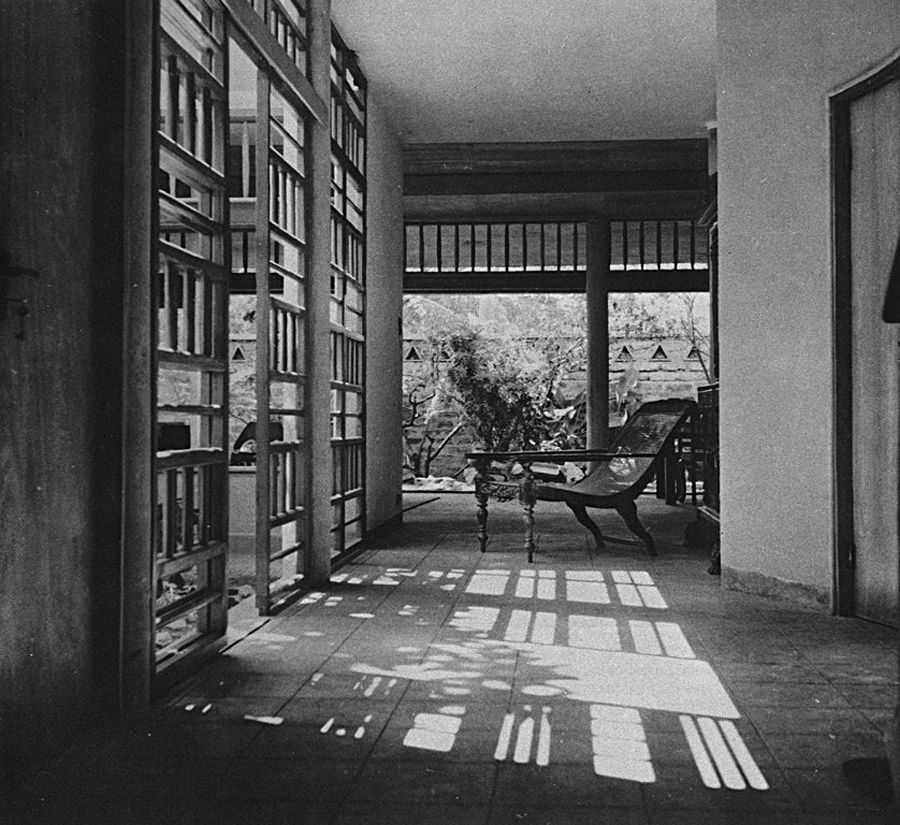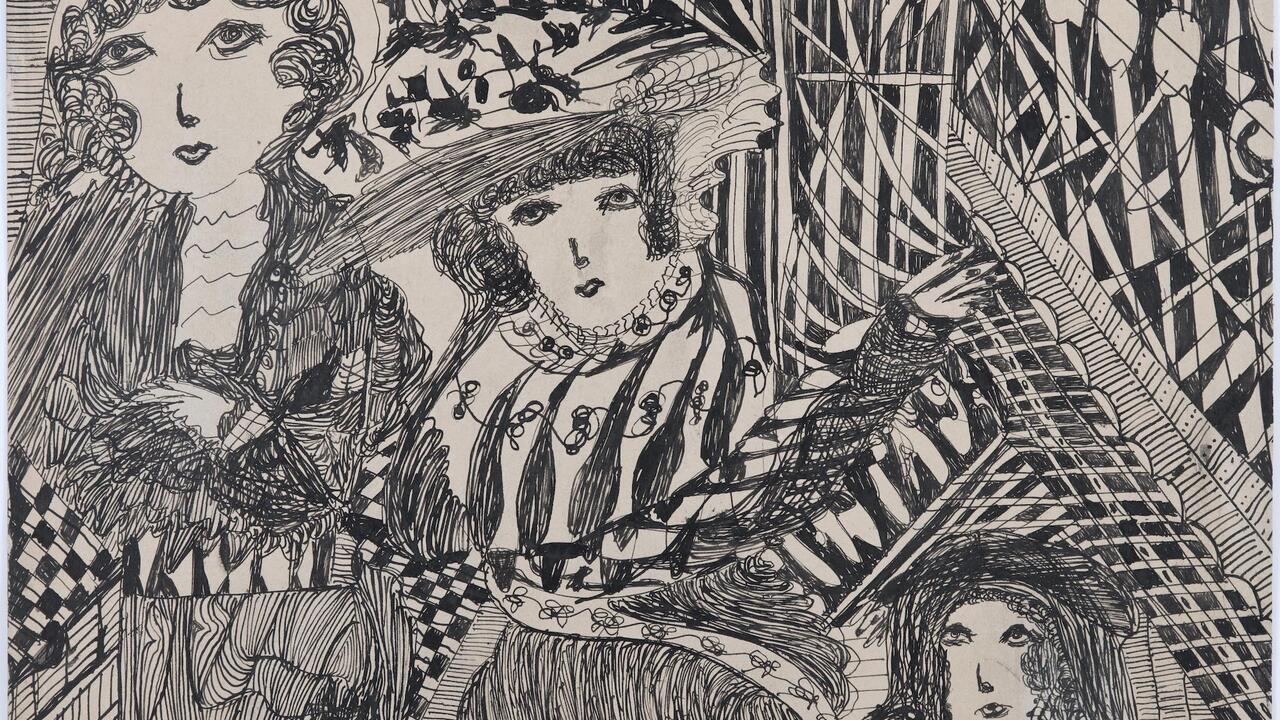Born 100 Years Ago, Remembering the ‘Tropical Modernist’ Architect Minnette de Silva
Born in Kandy, Minnette de Silva was the first Asian female architect to be registered with RIBA
Born in Kandy, Minnette de Silva was the first Asian female architect to be registered with RIBA

There is a famous picture of the 75 delegates to the 6th conference of the International Congresses of Modern Architecture (CIAM). Held in the UK in 1947, in the unassuming Somerset market town of Bridgewater, it was the first CIAM meeting to take place after the war. Lined up in four rows, as in a school photograph, are the gathered luminaries of the international style, many of them displaced by conflict in Europe, convening to reaffirm architecture’s ambitions to remake the war-scarred world. Le Corbusier, instantly recognizable in his round black glasses and dickie-bow, sits at one end of the first row; further back is a balding Ernesto Rogers, newly anointed publisher-editor of Domus; Maxwell Fry, smiling broadly, stands behind his wife, Jane Drew, both of them recently returned from their Colonial Office work in British West Africa. Two seats along from Drew, between Cornelis van Eesteren and Walter Gropius, sits a petite figure elegantly draped in a sari. At 29 and still a student at London’s Architectural Association (AA), she is perhaps the youngest delegate; she is certainly the only Asian.
Minnette de Silva, who would have been 100 this year, always called herself ‘an Asian woman architect’, as if highlighting the two factors that made her ascent in her chosen profession improbable. She was born in Kandy, the last capital of the ancient Sinhalese kings, in the central highlands of what was then Ceylon, to liberal, progressive parents who were both prominent figures in the country’s struggle for independence from the British. Her father, George de Silva, was a lawyer and politician who served in the Sri Lanka’s first post-independence cabinet; her mother, Agnes Nell, came from an aristocratic Burgher family and was a vocal advocate for female suffrage. The family lived in a house called St George’s, designed by Nell, where they entertained political figures from Lloyd George to the Nehrus. Lionel Wendt, founding member of the ’43 Group and a towering figure in Ceylonese artistic modernism, was Nell’s first cousin.
Perhaps it was St George’s – set in a tropical garden that Roland Penrose, visiting much later, in the 1980s, would describe as ‘a beautiful daydream’ – which lured the teenage De Silva to the architectural profession. There were certainly no precedents given her sex and caste – to the extent, in fact, that her otherwise-liberal father initially refused to pay her tuition fees at the private architectural school she attended in Bombay. (She was funded by an uncle of her mother.) According to her fragmentary, scrapbook-style memoir, The Life and Work of an Asian Woman Architect, self-published the year of her death in 1998, she was expelled from school in the early 1940s for attending a Free Gandhi March. She moved to Bangalore, where she worked for a short time in the office of Otto H. Königsberger, a German émigré fleeing the Nazis who was the chief architect and urban planner in the princely state of Mysore. (Königsberger went on to be Nehru’s first Federal Director of Housing; he later led the Department of Tropical Architecture at the AA and then University College London from 1956 until his retirement in 1988.)

A chance encounter with the 1st Viscount Soulbury at a dinner in Kandy assured De Silva a place to study architecture in Britain. (‘I know a winner when I see one,’ her memoir recounts the future Governor-General of Sri Lanka saying.) The flutter she must have caused, arriving in the rubble-strewn, rationed world of 1946 London, can only be imagined. The architect Gillian Howell, whose studies at the Architectural Association overlapped with De Silva’s remembers her as ‘strikingly beautiful, always dressed in exquisite saris, with fresh flowers in her hair and always followed by a train of young men carrying her drawing board an portfolio, her handbags, suitcases, scarves and shawls’.
On a trip to Paris, a friend arranged for her to meet Le Corbusier at his penthouse studio at 24 rue Nungesser et Coli. It was the beginning of a friendship that lasted a lifetime. (Amongst the other photographs from the 1947 Bridgewater meeting, there is an enigmatic image of her laughing indulgently at Corbusier, who reclines with the proprietorial ease of the self-assured in a chaise-longue¬.) In her buildings as in her writings, De Silva quoted Corbusier extensively; for his part, he was – she claimed – the only person who took a serious interest in her architecture. They maintained a long correspondence; he called her his ‘small bird of the islands’ and signed off with his namesake doodled crow (corbu).
Despite the varied distractions of London’s social and cultural offerings, which included working as an assistant at the Royal Academy’s important 1947–48 exhibition of works from India and Pakistan, De Silva completed her studies in 1948. She was the first female Asian female architect to be registered with the Royal Institute of British Architects – in the very year of Sri Lanka’s independence from the United Kingdom.

De Silva’s first commission – as much of her subsequent work – was for a private residence in Kandy. Designed for the Karunaratnes, a prominent Buddhist Singhalese family and friends of her parents, the split-level villa hugged the side of a hill. Each floor was a sequence of interconnected spaces that were joined via a long, curved sweep of stair that connected the entrance hall on the upper floor to the dining room below. Its clean, rectilinear forms sat within a lush garden; the house, with its expanse of window, terraces and deep, shaded verandas, aimed to bring building and landscape together: a commingling of outside and inside that De Silva intuitively understood to reflect the way people live in the tropical Sri Lankan climate. The midula – or courtyard room – was a form she returned to time and again in her buildings. She also stressed the importance of working with traditional craftsmen, enriching the stark formalism of her volumes with latticework, decorative cast tiles, lacquer-work and woven screens. ‘The craftsman,’ she wrote, ‘isolated from modern trends in life, has to be brought into the present, or else become a museum piece and extinct.’ She understood, too, modernism’s roots in global vernaculars – Corbusier’s white walls as inherited from archaic island architecture; moveable panels as re-imagined Japanese screens.
In 1953, De Silva wrote a prescient article for the Bombay-based arts and culture journal MARG describing the Karunaratne house as an experiment in ‘modern regional architecture in the tropics’. (MARG had been founded in 1946 by the writer Mulk Raj Anand with De Silva and her equally talented and single-minded sister, Anil.) She expanded upon this theme later, writing, in a 1965 piece looking back at 15 years of her work, about the need for Sri Lankan architecture, ‘to absorb what we absolutely need from the modern West, and to learn to keep the best of our own traditional forms.’

In this combination of the modern and the regional, she was doing something similar to what the Italian-born architect Lina Bo Bardi was attempting, at roughly the same time, in her adopted country of Brazil. Though Bo Bardi is perhaps best known for her museums and civic buildings in São Paulo, this rings especially true for her work in Bahia from the 1960s onwards. Here, her architecture drew heavily on the material culture of the country’s poor, largely Afro-Brazilian northeast. Indeed, Salvador’s Unhão Museum of Popular Art, which she designed in the early 1960s, was dedicated to artefacts of what she called, in the text for its inaugural exhibition, ‘“Northeastern Civilization” […] from lighting to kitchen spoons […] the desperate, furiously positive striving of people who refuse to be “dismissed”.’
De Silva’s syncretic tropical modernism was a political as well as a material project: the search not just for a new plastic language but, perhaps, a new way of being in a nation defining itself both with and against what had come before. As the world decolonized in the 1950s and ’60s, modernist architecture seemed to offer a ‘neutral’, internationalist and forward-oriented alternative to colonial and vernacular precedents, applied everywhere from Corbusier’s Chandigarh to the US’s postwar embassy building spree across the African continent. But modernism was always ideological. And if De Silva’s ‘international’ style fell out of favour, this may have had something to do with the bloody retrenchment of conflicting Tamil and Singhalese nationalisms within Sri Lanka itself from as early at the mid-1950s. After working throughout the 1950s and early ’60s on projects including a pioneering housing co-operative scheme and a block of flats that was her most devotedly Corbusian creation, she closed her practice in the mid-1970s and subsequently taught for some years in Hong Kong. Her sole piece of civic architecture, the Kandy Art Centre, was built when she returned to Sri Lanka in the early 1980s. (Heavily modified in the decades since, it is one of her few surviving structures.) De Silva died in St Georges in 1998.
Of Brazil, Bo Bardi once said: ‘I wasn’t born here. I chose to live in this place. That’s why Brazil is my country twice over.’ De Silva was Sri Lankan twice over, in the sense that new nations redefine their citizens, and the Sri Lanka to which she returned after her studies in 1949 was not the Ceylon that she had left in 1946. It seems to me her architecture was a way to bridge the gap between the two. As a quotation in the prologue of her memoir has it: ‘This she did, but not without struggle.’
Published in Frieze Masters, issue 7, 2018, with the title ‘Not Without Struggle’.
Main image: Minnette de Silva works at her drawing board at her Savile Row flat in London, 1947. Courtesy: Ron Burton/Stringer
























